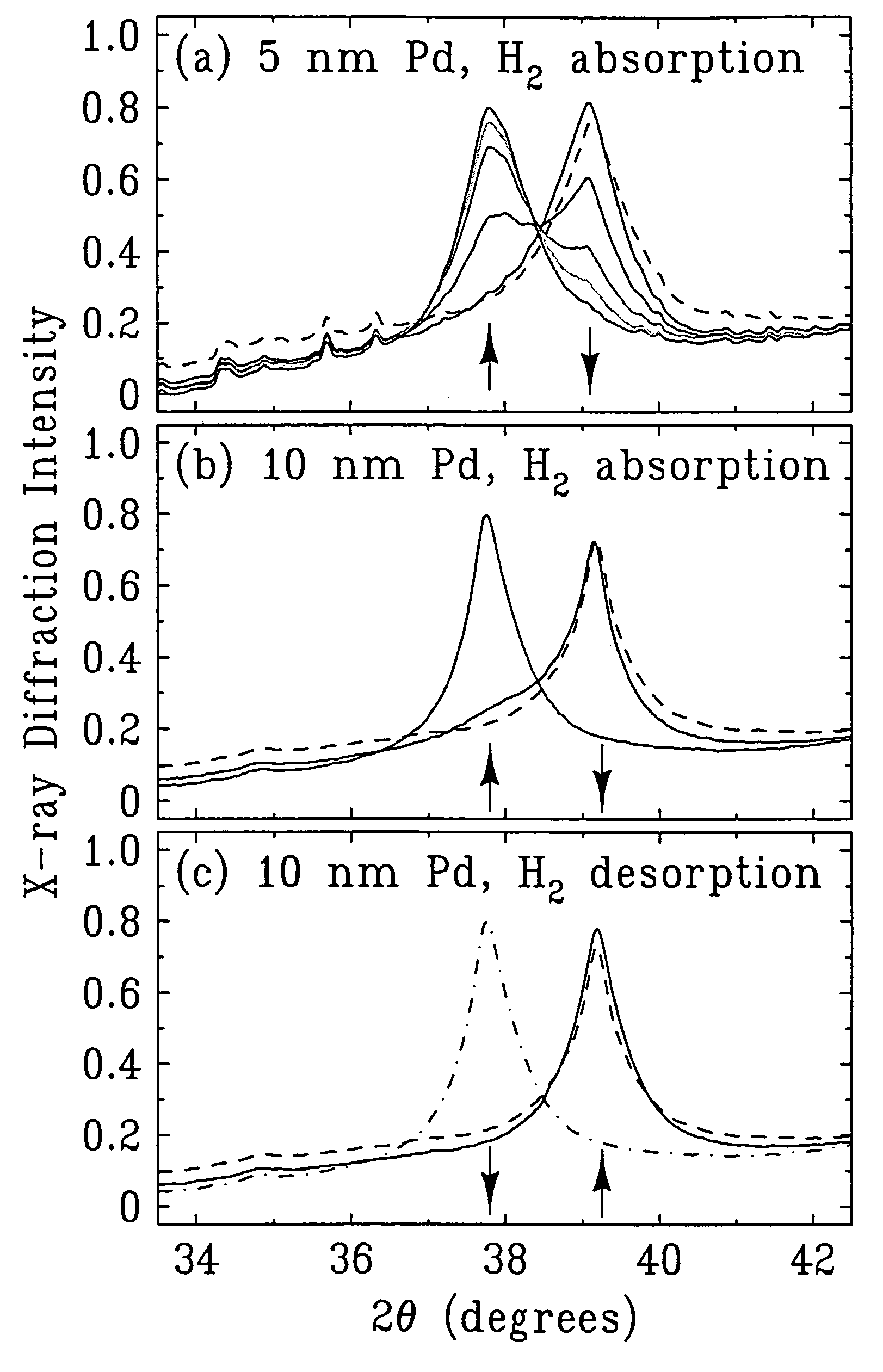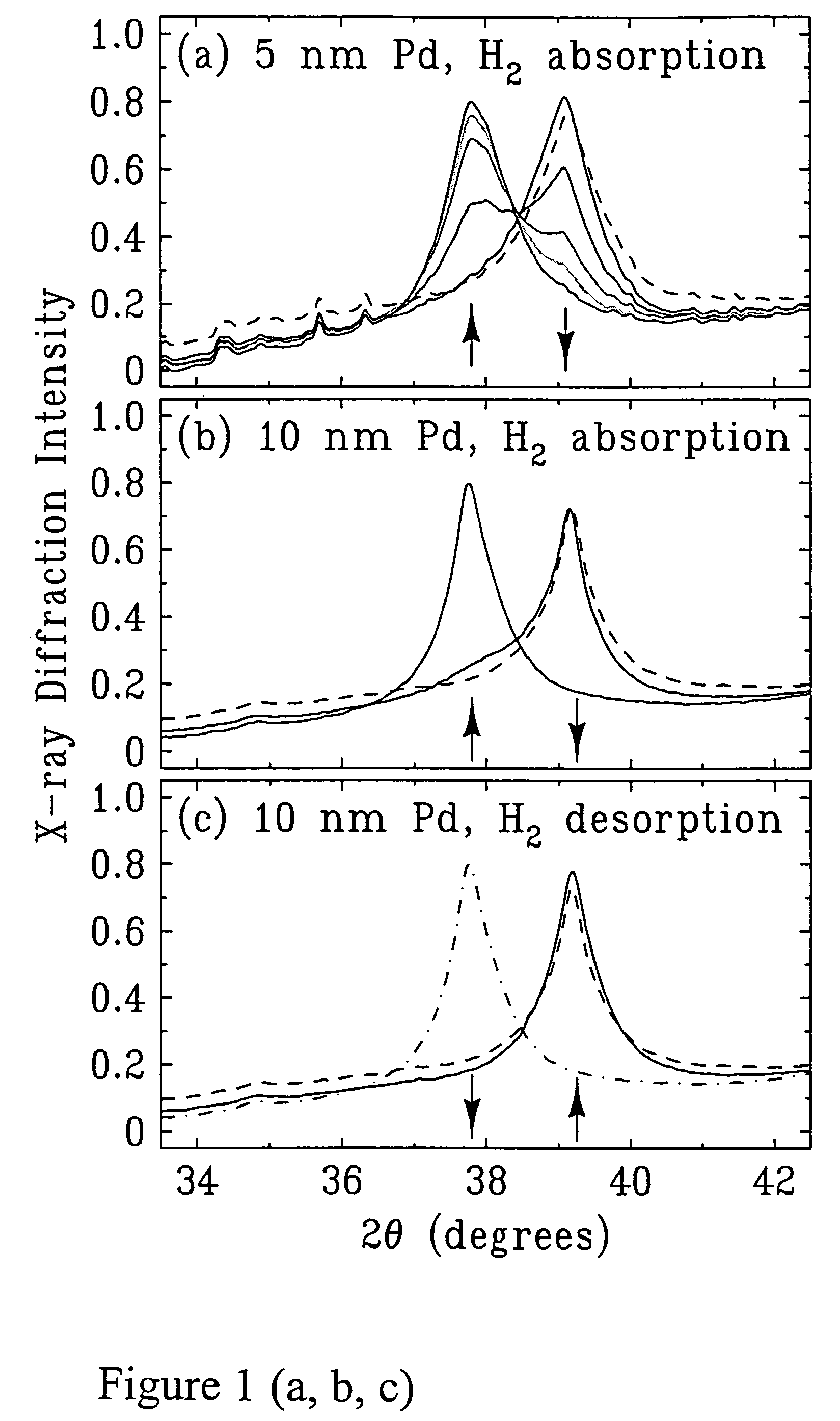Hydrogen absorption induced metal deposition on palladium and palladium-alloy particles
a palladium and alloy particle technology, applied in cell components, electrochemical generators, transportation and packaging, etc., can solve the problems of prohibitively expensive precious metals, high requirements for platinum loading using current state-of-the-art electrocatalysts, and inability to meet the requirements of fuel cell mass production,
- Summary
- Abstract
- Description
- Claims
- Application Information
AI Technical Summary
Benefits of technology
Problems solved by technology
Method used
Image
Examples
example 1
Preparation of Platinum-Coated Palladium Nanoparticle Composites
[0106]Twenty nmoles of palladium nanoparticles on a carbon support (10.6 mg 20% wt Pd / C purchased from E-TEK) were placed in a glass container with a gas inlet and outlet. The glass container was flushed with argon gas to remove traces of oxygen. The container was then filled with hydrogen gas for a period of about one hour. Separately, a 1mM aqueous solution of K2Pt(NO2)4 was prepared and deaerated. The resulting K2Pt(NO2)4 solution was added into the container. The gas was then switched to pure argon. The suspension in the container was sonicated to ensure a uniform contact between the palladium nanoparticles and the solution. After about an hour, hydrogen gas was bubbled through the suspension for another hour to make sure all the platinum ions were completely deposited on the palladium nanoparticles. The activity for oxygen reduction was then measured by the rotating disk electrode method in 0.1 M HClO4 solution. Th...
example 2
X-Ray Diffraction Analysis of Hydrogen-Absorbed and Desorbed Palladium Nanoparticles
[0107]The x-ray diffraction intensity profiles for hydrogen absorption in 5 nm palladium particles is shown in FIG. 1a. The peak position (39.2°) in the rightmost set of peaks corresponds to the lattice spacing of palladium nanoparticles before hydrogen absorption. The successively smaller peaks in the rightmost set of peaks and the increase of the leftmost set of peaks correspond to the lattice expansion of palladium as a function of time of exposure to 5% hydrogen in helium, i.e., after 2, 4, 6, 8, and 10 minutes of exposure. The curve corresponding to 10 minutes of hydrogen exposure shows a single x-ray diffraction peak (in leftmost set of peaks) at 37.8°, indicating the formation of the β phase of palladium hydride is completed. The shift of peak position from 39.2 to 37.8 corresponds to a lattice expansion of 3.5%, which is consistent with the value expected for the maximum absorption of hydroge...
PUM
| Property | Measurement | Unit |
|---|---|---|
| size | aaaaa | aaaaa |
| size | aaaaa | aaaaa |
| size | aaaaa | aaaaa |
Abstract
Description
Claims
Application Information
 Login to View More
Login to View More - R&D
- Intellectual Property
- Life Sciences
- Materials
- Tech Scout
- Unparalleled Data Quality
- Higher Quality Content
- 60% Fewer Hallucinations
Browse by: Latest US Patents, China's latest patents, Technical Efficacy Thesaurus, Application Domain, Technology Topic, Popular Technical Reports.
© 2025 PatSnap. All rights reserved.Legal|Privacy policy|Modern Slavery Act Transparency Statement|Sitemap|About US| Contact US: help@patsnap.com



